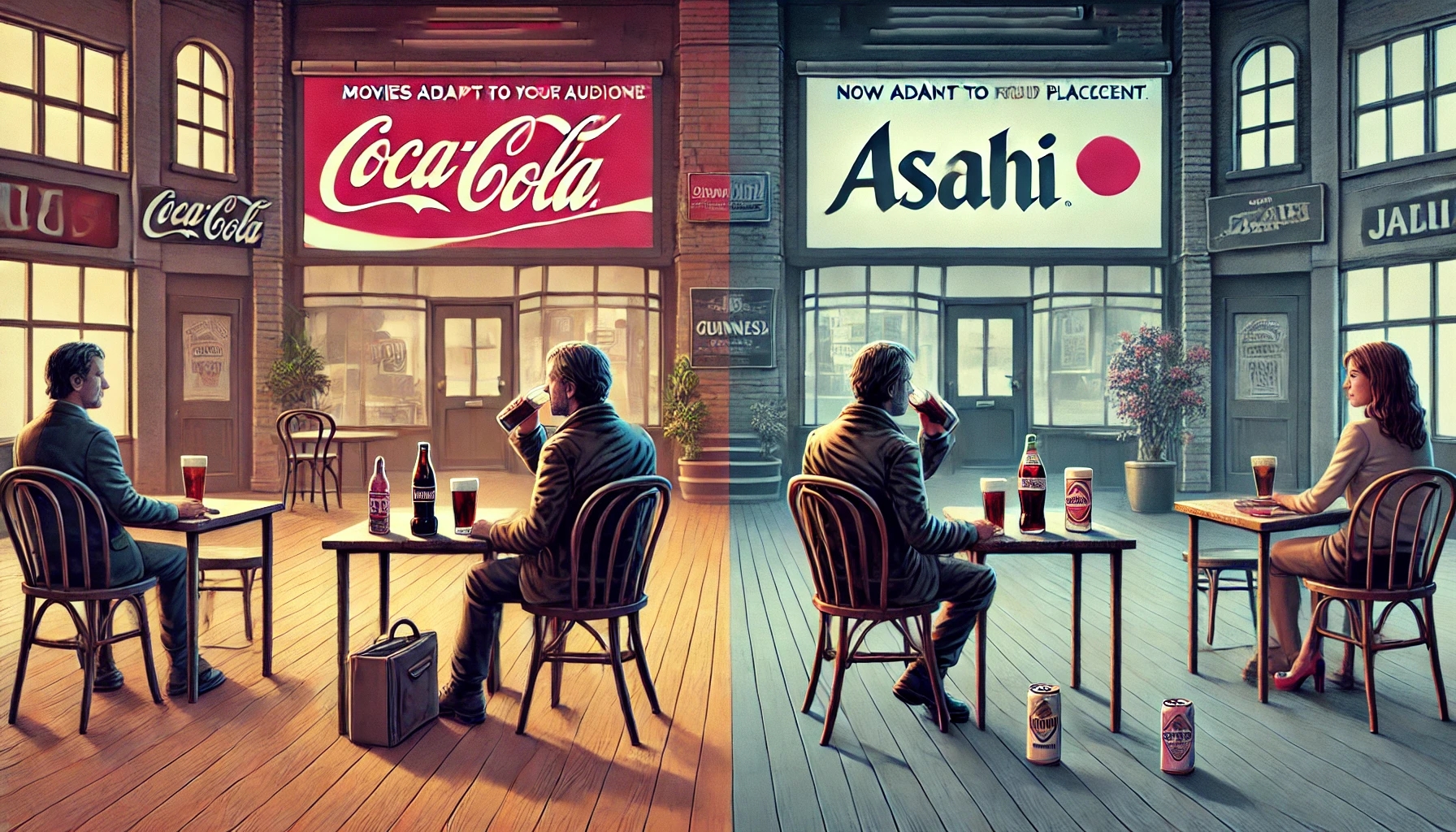
The significance of product placement in marketing strategies lies in its ability to reach consumers non-intrusively. Compared to traditional advertising methods, product placement feels more organic and integrated into the content consumers are already engaging with. It enhances the brand image by associating with popular content or personalities, boosting awareness and sales.
Product placement takes different forms. It can be visual, verbal, integrated, and virtual not even to mention the new, emerging forms. Are you ready to take a step inside the world of embedded marketing?
Visual Product Placement
Visual product placement involves integrating branded products or services into movies, TV shows, and other visual content. It’s a common strategy for advertisers seeking subtle yet effective ways to reach audiences amidst increasing advertising competition. With traditional methods like TV commercials losing effectiveness in the digital age, visually immersive content offers prime engagement opportunities, globally accessible across streaming platforms.
A successful placement campaign strategically positions products within scenes, ensuring seamless integration with the storyline. Products must be relevant and naturally visible without overshadowing the main content. Techniques include foreground placement, close-up shots, and framing to highlight the product’s relevance to the setting, character traits, or lifestyle.
Consistency in placement enhances brand recall, as seen in shows like House of Cards, featuring Apple products to complement its tech-focused setting. Breaking Bad subtly incorporates brands like Dell computers and Dodge vehicles, adding authenticity to the show’s settings. The Truman Show cleverly integrates brands into its reality TV premise, while The Devil Wears Prada showcases luxury brands through fashion choices, enriching its high-fashion world portrayal.
Verbal Product Placement
Verbal product placement is all about the things we hear. It subtly incorporates brand mentions into dialogue in films, TV shows, or media. Characters casually reference specific brands or products during conversations, creatively weaving them into the storyline to enhance authenticity.
This approach feels natural and relatable, but there’s a balance between smooth integration and feeling forced. When done well, it influences consumer choices, evoking emotions and reinforcing brand messaging aligned with character traits and real-life situations.
Popular shows like Friends and Grey’s Anatomy employ verbal product placement, where characters mention brands like Starbucks and medical equipment during dialogue, casually promoting them. Similarly, during one scene in Jurassic World, the characters are discussing their plan to escape from the dinosaur-infested island and they consider using a Mercedes-Benz vehicle, cleverly integrating the brand into the storyline.
Integrated Product Placement
Yet another type of product placement that must be mentioned is the integrated king. This product placement flawlessly blends products into the storyline, making them feel like natural parts of the narrative. Whether it’s a character using a specific brand or interacting with recognizable items, these moments enhance realism without disrupting the viewing experience.
By integrating brands into the storyline, viewers feel more connected to the content and the products themselves. This approach allows brands to reach audiences without interrupting their viewing, enhancing the overall engagement and authenticity of the content.
In Stranger Things, products from the 1980s like Eggo waffles and Coca-Cola are integrated into the storyline, adding to the nostalgic atmosphere. The Lego Movie cleverly incorporates various Lego sets and characters into the plot, immersing viewers in the Lego universe. Similarly, the Back to the Future franchise features the iconic DeLorean car as a central element, ingeniously blending it into the time-travel storyline.
“By integrating brands into the storyline, viewers feel more connected to the content and the products themselves. This approach allows brands to reach audiences without interrupting their viewing, enhancing the overall engagement and authenticity of the content.”
Virtual Product Placement
If there’s one product placement type that is on a whole other level it’s definitely the virtual one. VPP is all about digitally inserting products into media content post-production using CGI, offering endless customization possibilities as a result. It’s not limited to traditional media but extends to video games, AR, and VR, making it a versatile marketing tool.
Products can now be integrated into scenes without the need for a physical presence during filming. This technology enables marketers to incorporate specific products tailored to their intended audience, regardless of the original content. For instance, a can of beer that was used in a scene for European viewers can be changed into a cup of tea for the Arabic audience. This technique offers endless possibilities for customization.
The issue with giving you an example of virtual product placement is that – it’s so hard to differentiate it from the traditional one with the naked eye! Thanks to the advancement in technology you can’t spot whether the product has been inserted into the frame digitally or has been there all along during the filming process. While watching modern productions and noticing brands you have to ask yourself – was it even there in the first place?
Emerging Forms of Product Placement
In today’s digital world, traditional ads are giving way to subtler methods of reaching consumers. New product placement approaches leverage storytelling and authenticity to smoothly integrate brands into consumers’ lives. From influencer marketing to branded content and native ads, these methods aim to foster genuine connections between brands and consumers.
Influencer marketing involves collaborating with individuals who have a large and engaged following on social media platforms to promote products or services. Influencers create content featuring the brand’s products in a way that resonates with their audience. This form of product placement leverages the trust and authenticity that influencers have built with their followers.
Branded content involves creating content that integrates a brand’s products or messaging in a way that aligns with the content’s theme or storyline. This could include sponsored articles, videos, podcasts, or social media posts. Unlike traditional advertising, branded content aims to provide value to the audience by entertaining, informing, or inspiring them, rather than directly promoting the brand.
Are you ready to take your brand visibility and engagement to the next level? Dive deeper into the world of product placement and discover how different strategies can amplify your presence across various media platforms. Learn how visual, verbal, integrated, and most of all virtual product placement can help you connect with your audience in meaningful and memorable ways.
Explore case studies, industry insights, and expert advice to uncover the potential of product placement for your brand. Equip yourself with the knowledge and tools to craft compelling narratives, forge strategic partnerships, and make a lasting impact on your target market.
Take the first step now and discover the possibilities. Your audience is waiting.
Let’s make it happen!


